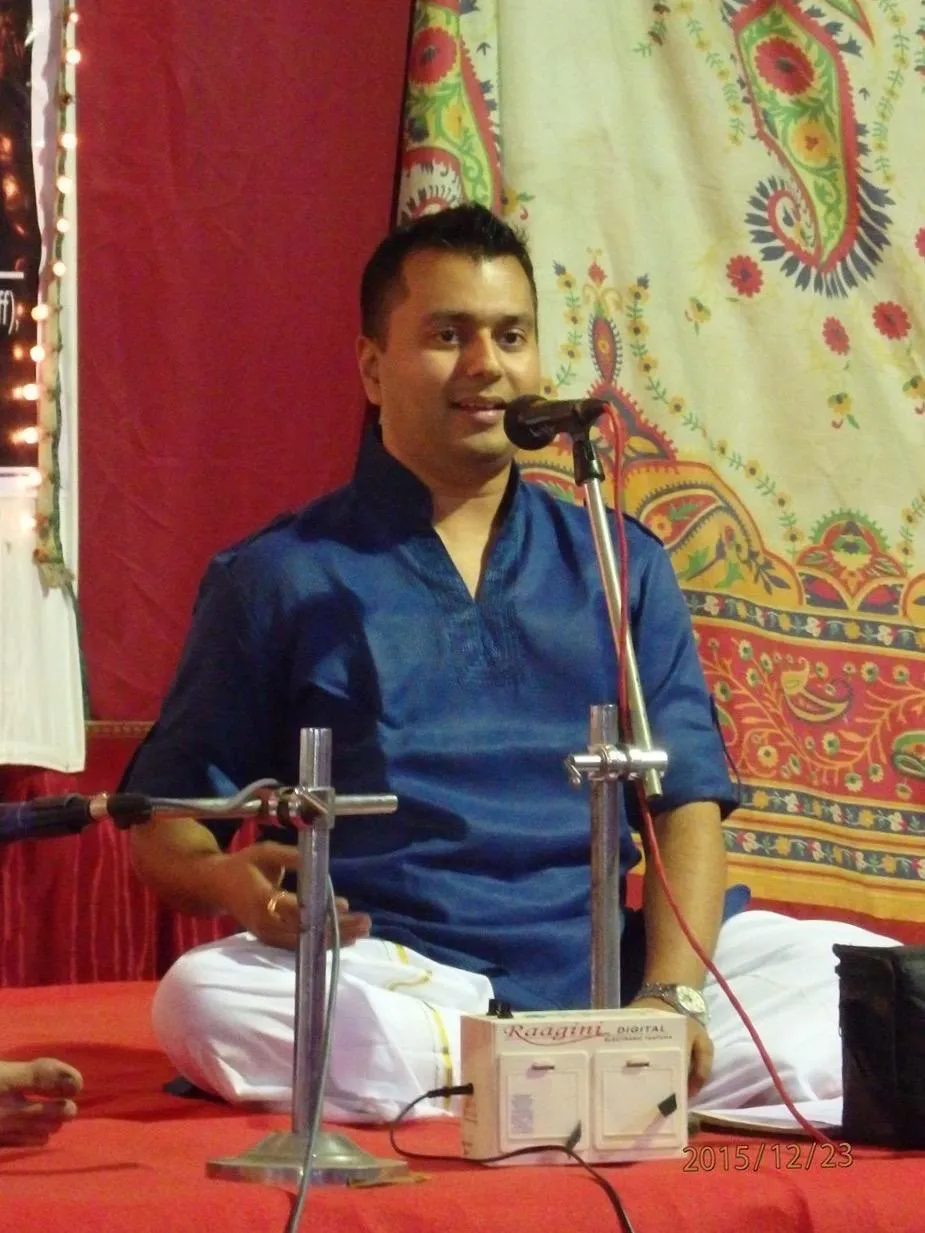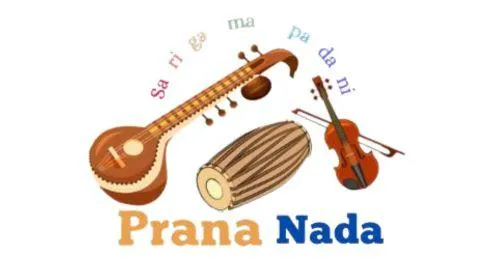Grand Carnatic Music Concert
Prana Nada, the Carnatic Music Association Netherlands, brings you the quintessence of Indian Classical Music.
Prana Nada - the Carnatic Music Association netherlands
We are super honoured to organise a grand Indian classical musical concert by the legendary Carnatic Musician from south of India - Padmabhushan Dr. Sudha Ragunathan.
She will be accompanied by very popular A grade artists from India - Embar S Kannan on the violin and Neyveli Skanda Subramaninan on the mrudangam.
Venue : DOMINICUSKERK, Spuistraat 12, Amsterdam.
Time: 19:00 - 22:00
Doors open from 18:30
Join us in this melodic and soul stirring concert filled with the devotion, rhythm and bliss.
Looking forwards to this musical evening with all of you.

About the lead artist
Sudha Ragunathan is an Indian Carnatic vocalist, singer and composer. She was conferred the Kalaimamani award by the Government of Tamil Nadu in 1994, Padma Shri (2004) and Padma Bhushan (2015) by the Government of India, and Sangeetha Kalanidhi by Madras Music Academy in 2013. She is one of the torch bearers of a great lineage of legendary musicians who lead the foundation of this rich traditions of classical music. Besides being a regular performer in all the major music festivals all over India but highly respected and called for regular musical tours in the USA, Middle - East, Australia & many music festivals in Europe. She has 1000s of record albums in her name and also has sung in many Tamil Cinema as a playback singer. She launched the Samudaaya Foundation in 1999, and has assisted the underprivileged in the areas of child healthcare, infrastructural aid for homes, and heart surgeries for children including raising of fund for earthquake & cyclone victims in India.
On the Violin
Embar S. Kannan is a violinist in the fields of Carnatic Music and Tamil Film Music. Trained in Carnatic as well as Western Classical methods, he is a Grade 'A top' artist of the All India Radio and is universally acclaimed as a soloist and an accompanist.
On the Mridangam
Neyveli Skanda Subramanian is one of the leading percussionist from India who is also a top grade artist of All India Radio and universally acclaimed mridangist and has his own school of students that he trains young students in the filed of percussion.
Learn more about Carnatic music here...
What is Carnatic music?
Carnatic music is one of the two main subgenres of Indian classical music (the other being Hindustani music). It is primarily vocal-centric, with compositions often set to specific ragas (melodic frameworks) and talas (rhythmic cycles). It emphasizes improvisation, devotion, and a deep understanding of its intricate theoretical structure.
Where did Carnatic music originate?
Carnatic music originated in South India, with its roots tracing back to ancient Hindu traditions and scriptures. Over centuries, it evolved into the distinct form we recognize today, particularly flourishing during the Vijayanagara Empire and under the patronage of various South Indian kingdoms.
Who are some of the most influential figures in Carnatic music?
The "Trinity of Carnatic Music" — Tyagaraja (1767–1847), Muthuswami Dikshitar (1776–1835), and Shyama Shastri (1762–1827) — are considered the pillars of the tradition. Their compositions form the core repertoire and are widely studied and performed. Other notable figures include Purandara Dasa, Annamacharya, Swathi Thirunal, and many contemporary artists.
What are the key elements of Carnatic music?
The fundamental elements of Carnatic music are:
*Raga : The melodic framework, a specific set of notes with characteristic phrases and emotional content. There are thousands of ragas, each evoking a particular mood or feeling.
*Tala: The rhythmic cycle, a structured pattern of beats and subdivisions that provides the rhythmic foundation for the music. Talas can be simple or highly complex.
*Shruti : The microtonal intervals, subtle variations in pitch that add depth and nuance to the melodic expression.
*Gamaka: Ornamentations and embellishments applied to notes, which are crucial to the melodic beauty and characteristic expression of a raga.
* Sahitya: The lyrical content of a composition, typically devotional in nature, often in Sanskrit, Telugu, Tamil, or Kannada.
What instruments are typically used in Carnatic music?
While primarily vocal-centric, several instruments accompany Carnatic performances:
*Mridangam: The principal percussion instrument, a double-headed drum.
*Violin : Used as an accompanying melodic instrument, played in a specific Carnatic style.
*Ghatam : A clay pot, used as an auxiliary percussion instrument.
*Kanjira: A small frame drum, another auxiliary percussion instrument.
*Thavil: A large barrel-shaped drum, primarily used in temple music and with Nadaswaram.
*Veena: A plucked string instrument, often played as a solo instrument as well.
*Flute: The bamboo flute is also a popular melodic instrument.
*Tambura : A drone instrument that provides the continuous harmonic backdrop (tonic and fifth).
How does Carnatic music differ from Hindustani music?
While both are forms of Indian classical music, key differences include:
*Geographical Origin: Carnatic from South India, Hindustani from North India.
*Emphasis: Carnatic is more composition-based with structured improvisation, while Hindustani places a greater emphasis on elaborate melodic improvisation (alap).
*Instrumentation: While some instruments are shared, others are unique to each tradition (e.g., mridangam vs. tabla, veena vs. sitar).
*Raga System: While both use ragas, their classifications and melodic developments have distinct approaches.
*Performance Structure: Carnatic concerts typically follow a more structured sequence of compositions, whereas Hindustani concerts often feature extended renditions of individual ragas.
*Influence: Carnatic music has retained more of its original Hindu devotional character, while Hindustani music shows more Persian and Islamic influences
What is a Kriti?
A kriti is the most common and central form of composition in Carnatic music. It typically consists of three parts:
*Pallavi: The thematic opening line, usually repeated.
*Anupallavi: The second section, elaborating on the pallavi's theme.
* Charanam: The concluding stanza, which often includes the composer's signature (mudra). Kriti compositions are typically set to a specific raga and tala and are known for their melodic beauty and lyrical depth.
Is improvisation important in Carnatic music?
Yes, improvisation is a vital and highly valued aspect of Carnatic music. While compositions provide a framework, artists are expected to improvise within the rules of the raga and tala. Common improvisational forms include:
*Raga Alapana : An elaborate, non-rhythmic exploration of the raga's melodic essence.
* Kalpana Swaram: Improvisation using solfa syllables (sa, ri, ga, ma, pa, dha, ni).
*Neraval: Melodic and rhythmic improvisation on a line of the kriti.
*Tani Avartanam : An extended solo percussion interlude.
How can I start learning Carnatic music?
Learning Carnatic music typically involves:
*Finding a Guru (Teacher): Traditional one-on-one instruction is highly recommended.
*Learning Sarali Varisai: Basic exercises that introduce fundamental notes and patterns.
*Practicing Alankaram : Exercises that introduce different talas.
*Studying Geethams and Swarajatis : Simple compositions that introduce ragas and talas.
* Progressing to Kritis: Gradually moving to more complex compositions and improvisational techniques.
Consistent practice, listening to performances, and developing a deep appreciation for the art form are crucial.
Where can I experience Carnatic music?
You can experience Carnatic music through:
*Live Concerts : Many cities, especially in South India and increasingly around the world, host Carnatic concerts. The Chennai Music Season (December-January) is a major festival.
*Online Platforms: YouTube, dedicated music streaming services, and archival websites offer a vast collection of performances and recordings.
*Music Schools and Organizations: Many institutions offer classes and organize performances and workshops.
This event is organised by Dr. Prashant, who has a rich background in Carnatic Music...

Dr. Prashant was born in Mumbai, his journey into Carnatic music began at the age of four, learnt beginner lessons from his first guru- Mrs. Nirmala Vishwanathan. Later he continued further musical training under Mrs. Subaa Iyer, with whom he studied privately for more than 10 years. Under her guidance, he also began assisting her in teaching younger students. he also gave concerts in temples & local sabhas, and participated in various cultural events, school competitions etc winning several prices.
In 2002, he met Sri Kallidaikurucchi M Sankaranarayanan sir belonging to the GNB school of music and he immediately was taken under the wings of this great teacher - for advanced Carnatic musical training. Dr. Prashant soon took position as secretary of an organisation founded by his Guru to conduct monthly concerts, invite various artists & promote young talents. Prashant also served as an examiner for Gandharva Gana Vidyalaya and other music schools in Mumbai.
Now he lives in Amsterdam, Netherlands & continues to explore and share his passion for Carnatic music. During the COVID period, he had the rare opportunity to learn from legendary Indian musicians viz. Sri RK Sriram Kumar,Dr. S Sowmya, to name a few, enriching his repertoire even further. He currently teaches few students, performs occasionally. Presently, he trains under the guidance of Dr. Gayathri Girish.
Though his roots are in traditional, Dr. Prashant strives to make it more accessible to Western audiences through lecture-demonstration, music appreciation sessions, and mini concerts to showcase the lyrical, melodic & depth of this rich Indian culture and musical form.

